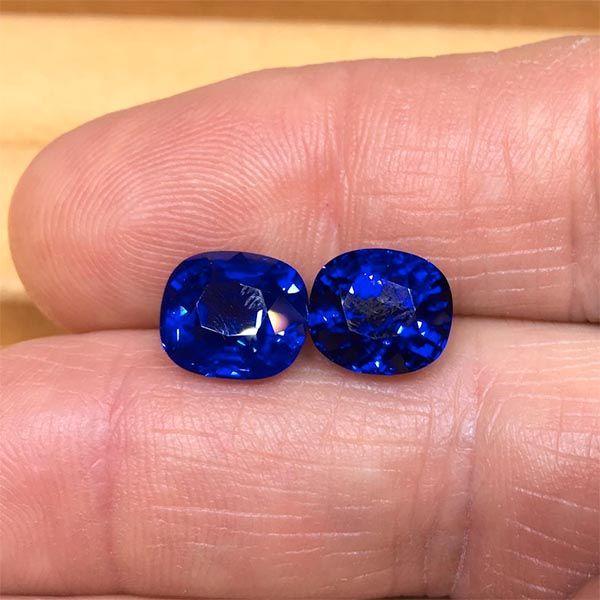
When Walter McTeigue, co-owner of the Berkshires and NYC-based luxury jewelry atelier McTeigue & McClelland shopped the AGTA Pavilion at this year’s JCK Las Vegas, he posed a question to his Instagram followers, accompanied by the image shown above:
Can you tell which #sapphire is from #Madagascar and which from #kashmir – at FOUR TIMES THE PRICE…?
Each stone weighed 4.5 cts. and, as you can see in the photo, were quite similar in appearance. “You would probably have no problem selling them as a perfectly matched pair of stones, say for a pair of earrings,” says McTeigue.
Kashmir sapphires, as many in our community well know, have a very distinctive color and the material itself has a unique brilliance to it, what McTeigue would describe as a silky look and feel. Certainly, there’s a built-in cachet that comes with a sapphire’s origin, whether it’s from Kashmir, Burma, or Sri Lanka, but is the markup worth it?
“Madagascar produces more sapphires that look like Kashmir than any other country, but ironically, Madagascar has the least pedigree in the hierarchy,” says McTeigue, who acknowledges that not every Kashmir sapphire displays the ideal caliber of color, clarity, and brilliance, despite their prestigious reputation.
Which is why McTeigue and his business partner, Tim McClelland, stand by a very simple, but effective gem-hunting strategy: “If you’re looking for a really beautiful stone, you don’t look at the origin, because the prices relative to the stones can be very skewed. The country of origin—the paper that comes with your purchase—only helps to corroborate the value of the stone.”
Consider an unsigned antique Tutti Frutti bracelet that hails from an anonymous workshop—its perceived value is automatically less than a nearly identical design with a Cartier signature.
A gem dealer’s decision to charge big bucks for a Kashmir sapphire also has to do with rarity. There are significantly fewer Kashmir sapphires (a finite number in the world that are known about, according to McTeigue) than those that hail from Madagascar. “But Madagascar sapphires are extremely undervalued in my mind,” says McTeigue, who feels the same way about rubies from Mozambique, a stone he and his team are very proud to offer their clients.
“We like being at the forefront of those who got behind a beautiful stone early. When sapphires from Madagascar entered the market, people would lie about their origin because it seemed sort of unglamorous.
“Twenty years from now, people [in the trade] are going to be laughing at how they turned their noses up at sapphires from Madagascar, because I think these stones will ultimately earn the status of being a luxury, in-demand product.”
Turns out, neither Instagram-featured sapphire made its way into the McTeigue & McClelland collection that day. “I think the dealer recognized the Madagascar was as good as a Kashmir and wanted a lot of money for it. It was a reasonable price but I don’t buy just to buy.”
But back to the original question—can you tell which one is the Kashmir and which one is the Madagascar? Venture a guess in the comments below.
Follow me on Instagram – @aelliott718
Follow JCK on Instagram: @jckmagazineFollow JCK on Twitter: @jckmagazine
Follow JCK on Facebook: @jckmagazine